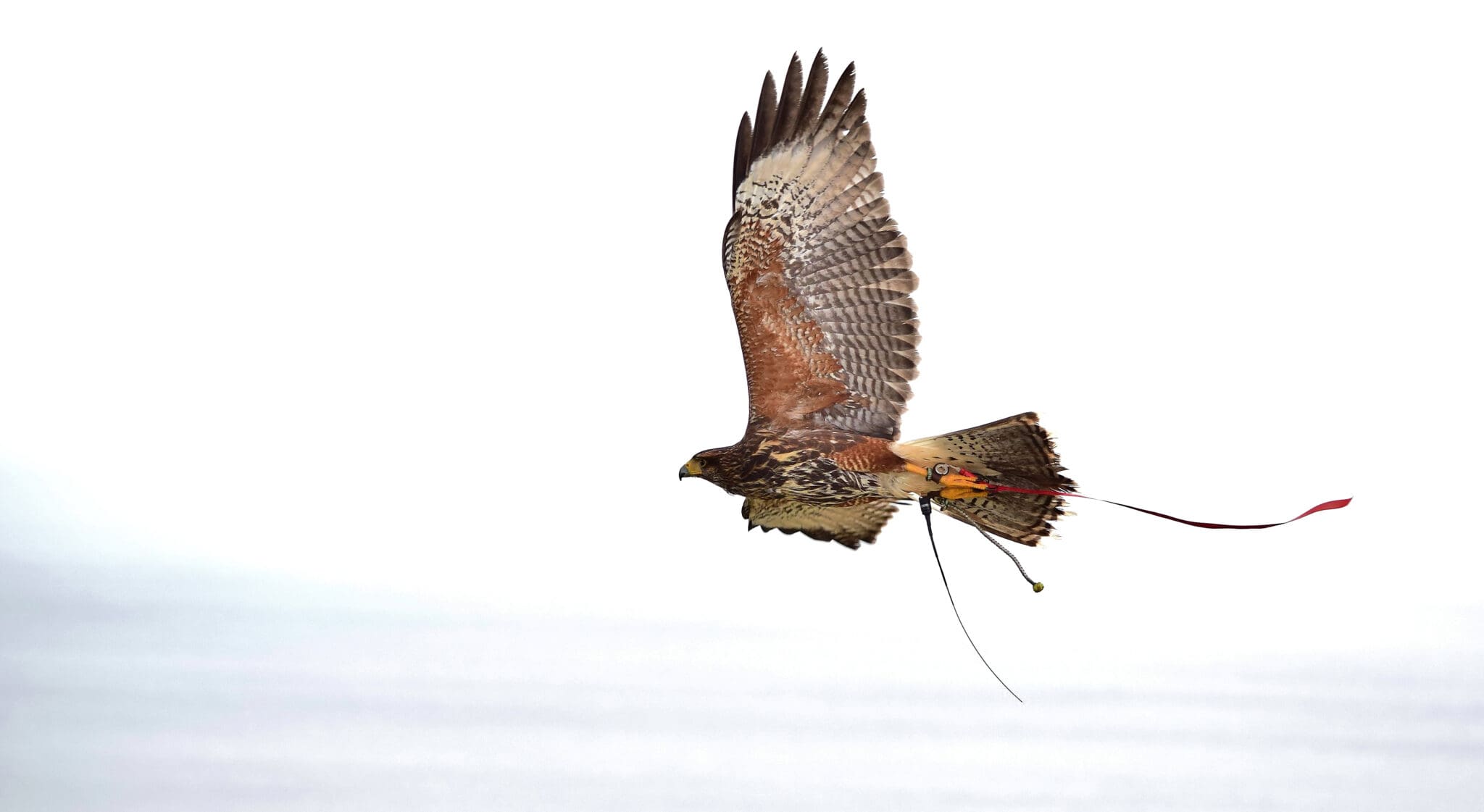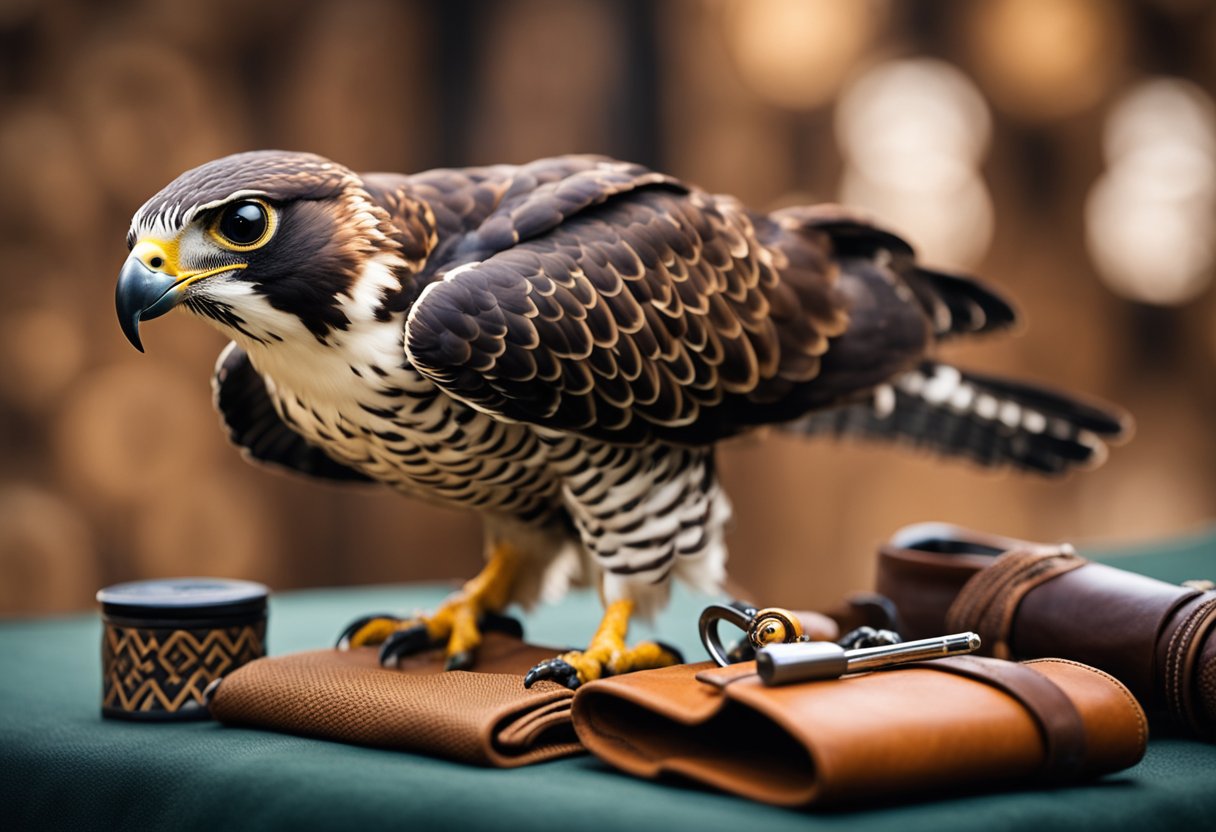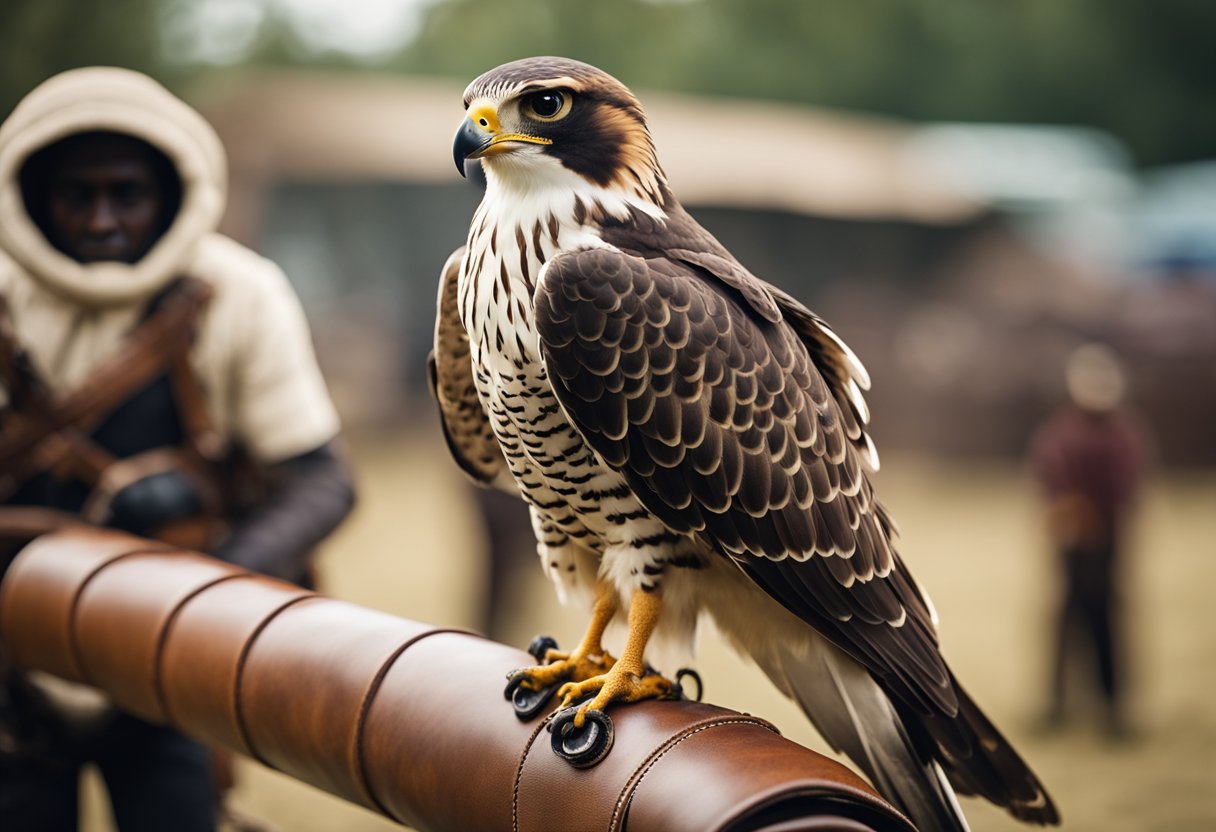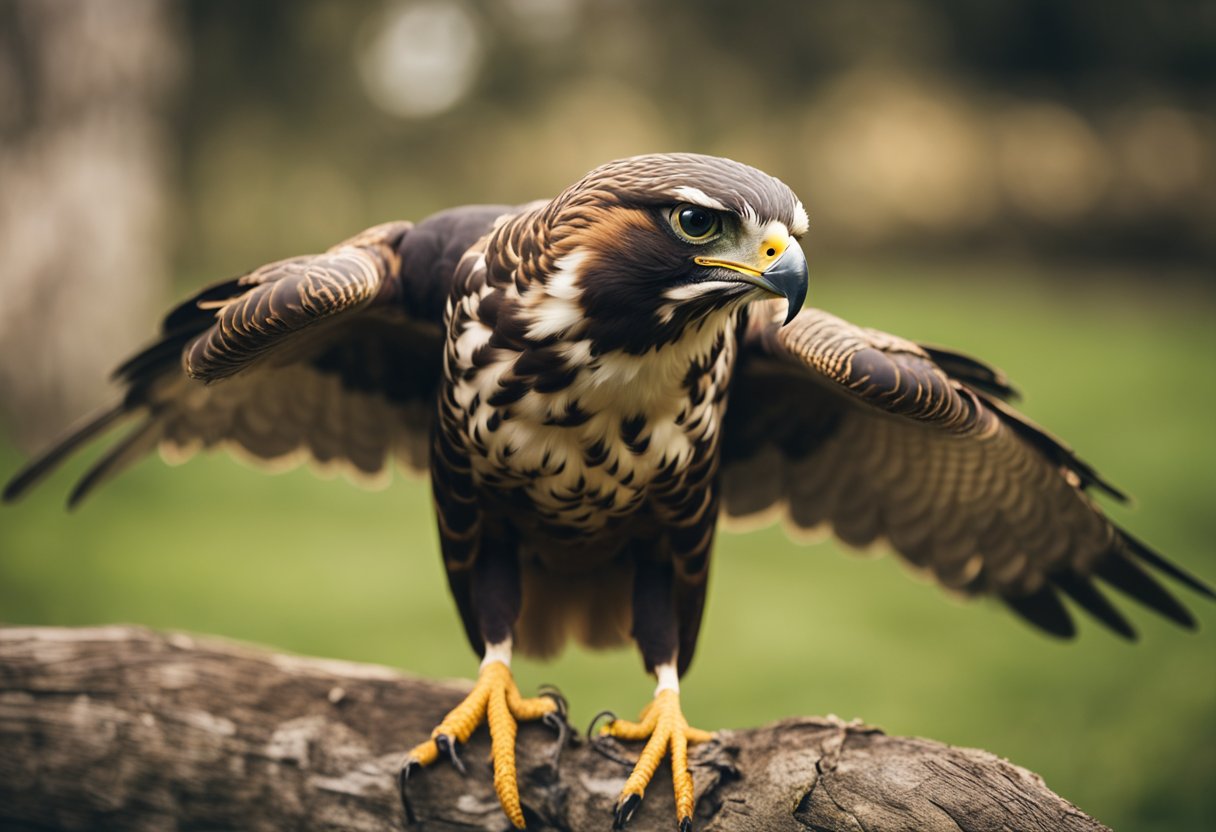The Ancient Art of Falconry Across Cultures

Updated On: April 20, 2024 by Eman Sameh
Falconry, an age-old relationship between humans and birds of prey, transcends cultures and borders with its rich history and traditional significance. This art form involves the careful nurturing and training of birds such as falcons, hawks, and eagles for hunting. Originally a means of subsistence, it has grown into a bond respected by many societies around the world for its deep-rooted connection to nature and heritage. We see falconry not just as a practice but as a bridge between the past and present, embodying the essence of how humans have interactively engaged with the environment.

Our journey takes us through various cultures where the art of falconry has been adapted and celebrated in unique ways. The practice holds a prestigious position, once known as the ‘Sport of Kings’, highlighting its association with nobility and status. However, beyond its historical allure, falconry today contributes to nature conservation and education, emphasising ethical considerations and sustainable interaction with wildlife. Through this exploration, we aim to illuminate the art and skill behind falconry that continues to captivate enthusiasts and professionals alike.
The Art of Falconry in History
The art of falconry holds a pivotal place in the history of human heritage. Once a means of survival, it has become a symbol of cultural identity and tradition.
Origins and Global Spread
Falconry, the noble art of hunting with birds of prey, has roots tracing back to approximately 2000 BCE in Mesopotamia. Its practice likely began as a method of obtaining food. We can find the earliest solid evidence for the art of falconry on a pottery sherd from the Tell Chuera site in modern-day Syria. This ancient art spread globally, flourishing in diverse cultures and regions. The spread of falconry across continents reflects its adaptability and importance to societies, encompassing social status and heritage.
Falconry in Ancient Civilisations
In the ancient civilisations of Egypt, Persia, and East Asia, the art of falconry was not only a hunting technique but also a symbol of prestige and power. Korean and Japanese nobles considered falcons esteemed members of their families. In Europe, particularly during the Middle Ages, falconry became an established sport and status symbol among the noble classes. Its practice and techniques were refined and developed further, embedding the tradition deeply into the cultural fabric of medieval society.
UNESCO Recognition
In recognition of its historical and cultural significance, UNESCO has inscribed falconry on the Representative List of the Intangible Cultural Heritage of Humanity. This underscores our collective commitment to the preservation and celebration of this ancient practice. By listing falconry as part of humanity’s shared heritage, UNESCO acknowledges the deep connections and mutual respect between humans, birds of prey, and nature, which the art of falconry embodies.
Falconry as Cultural Heritage
We recognise that falconry is not only a sport or hobby but a significant cultural heritage that spans across various continents, embedding itself in the traditions of numerous societies. Its deep-rooted significance in heritage and culture is evident by its longstanding history within these communities.
Falconry as a Status Symbol
The art of Falconry has long been associated with the social elite and nobility. The ownership of birds of prey was indicative of one’s social standing and privilege, particularly in medieval society, where possessing these magnificent creatures could signify rank and wealth. Falconry equipment also played its part; intricately decorated hoods, gloves, and jesses often bore the owner’s coat of arms, enhancing the artistic expression within the sport.
Cultural Significance Beyond Hunting
Beyond its practical applications, falconry has served as a powerful cultural symbol in many countries. These birds of prey have featured prominently on national emblems, coins, and postage stamps, reflecting their importance in heritage and identity. The art of falconry encapsulates a shared human culture; through this, it gains a level of prestige as a living tradition passed down through generations.
European Traditions
In Europe, falconry has evolved from a hunting practice to a symbol of status and refinement. This illustrious pastime played a substantial role throughout the Middle Ages and Renaissance, often associated with nobility and royalty. Countries like the United Kingdom harboured schools and written works dedicated to falconry, showcasing the sport’s prestige and its inculcation into European culture and art.
Nations such as Belgium, France, Italy, and the Netherlands have cultivated falconry as a sport of nobility, with each country developing its unique traditions over centuries. For instance, the rich falconry heritage of Belgium includes practices that have been passed down to generations. Falconry in Italy is often synonymous with Renaissance and Medieval history, where falcon hunting was a revered art.
Asian Influence
Moving towards Central Asia, countries like Mongolia, Kazakhstan, and Kyrgyzstan demonstrate profound expertise in falconry. Mongolian traditions, closely linked to their nomadic lifestyle, involve hunting with golden eagles, paying testament to their astonishing skills and intimate relationship with the birds. Falconry in Kazakhstan and Kyrgyzstan is also deeply rooted, predominantly using birds of prey to hunt in the expansive steppe landscapes.
Middle Eastern Practices
The Middle East, especially nations like the United Arab Emirates and Saudi Arabia, honours falconry as a vitally significant cultural and sporting activity, representing power, prestige, and an inherent connection to the desert landscapes. In the UAE, falconry is safeguarded through conservation efforts and celebration of its heritage, further underscored by their falconry exhibitions.
In Africa, Morocco’s relationship with falconry dates back centuries, integrating this practice into local customs and societal norms. Falconry in this region is not only about the hunt but also about the symbolic meanings, connecting Moroccans to their land and ancestors. Similarly, falconry in Syria, despite recent challenges, continues to be a poignant part of their cultural tapestry.
Birds of Prey Utilised in Falconry
Falconry involves highly skilled birds of prey, each selected for their specific hunting attributes and suitability to the sport. The mastery of falconry is not merely in the training but also in understanding the nuanced abilities of each avian partner.
Characteristics of Birds of Prey
Birds of prey, or raptors, are known for their keen eyesight, sharp talons, and hooked beaks, characteristics that equip them for hunting. Raptors encompass a range of species, each with varying flight patterns and hunting techniques. For instance, falcons are famed for their incredible speeds and agile manoeuvres during flight, with the peregrine falcon often being prized for its stooping technique, where it dives toward its prey at electrifying speeds.
Raptor Species Around the World
Different cultures have utilised a variety of raptors for falconry, selecting species well-suited to their local environments.
- Falcons: Revered for their agility and speed. These include the swift peregrine falcon and the robust gyrfalcon; both favoured for their remarkable hunting skills.
Hawks: Known for their strength and endurance. The goshawk, for example, is a versatile hunter in wooded areas, while the smaller sparrowhawk is adept at navigating through dense vegetation.
Eagles: Powerhouse raptors like the golden eagle are chosen for their formidable strength and ability to take down larger games.
Training and Husbandry

In the traditional art of falconry, the aspects of training and husbandry are crucial. Our expertise ensures that these birds of prey are not only well-cared for but also respectfully trained, building a bond of trust that is essential for falconry.
Building Trust with Raptors
Building trust with raptors, a process known as manning, involves daily interaction and gentle handling. Initially, the raptor must become accustomed to the presence of the falconer. We often start by feeding the birds on the glove, allowing them to associate us with food and safety. Over time, this routine helps establish a strong bond of trust that is fundamental for successful falconry. The raptor learns to return to the falconer’s glove, and as trust grows, the range of flight during hunting or recreational practice broadens.
Breeding and Nesting
The breeding of raptors in captivity, known as captive breeding, is performed with great care to mimic their natural environment, ensuring that the integrity of their behaviours is maintained. In falconry, the construction of an artificial nest, simulating conditions similar to those in the wild, is a nuanced task.
Successful breeding requires an understanding of the birds’ needs, from the material of the nest to the placement within the aviary. During the nesting period, we must also ensure minimal disturbance to encourage natural behaviours that are integral to the health and well-being of these majestic animals.
Falconry Equipment and Technique
In falconry, the right equipment and technique are crucial for the effective training and management of birds of prey. Understanding the gear and methods used in this sport helps to ensure ethical hunting practices and the well-being of these magnificent creatures.
Essential Falconry Gear
The traditional sport of falconry requires specific equipment to manage and train the birds effectively. All raptors need a secure and comfortable falconry glove to protect the handler’s hand. Besides the glove, a falconer must have jesses, which are leather straps attached to the bird’s legs, and a leash to secure the bird to a perch.
Other critical gear includes a hood to keep the bird calm and a lure used in training to simulate prey. A swivel and creance for tethering the bird during initial training are also integral. A well-crafted block perch or bow perch suits the bird’s needs when resting, while a hawk box or transportable mews provides safe travel and housing.
Equipment must be carefully selected and maintained; the quality and fitness of each item directly impact the bird’s handling and the outcome of training and hunting. Appropriate sizing for the particular species of raptor is necessary to prevent any harm or discomfort to the bird.
Methods of Training and Hunting
Falconry involves meticulous training and hunting techniques refined over centuries. The process of manning, or acclimating the bird to human presence, is the first step and foundational for the bird’s responsiveness. Falconers need to build trust with their birds through gentle handling and consistent interaction. After manning, comes the training phase which teaches the raptor to return to the falconer’s glove for food. Utilising the lure in training imitates the hunt and sharpens the bird’s skills.
Once a bird is well-trained, it can partake in actual hunting sessions. In hunting, the raptor uses its natural instincts and the lessons learned to pursue live quarry. Trapping often involves the use of a trained raptor to capture prey in its natural habitat, demonstrating the athleticism and strength of the bird, as well as the seamless communication between the bird and the falconer.
Legal and Ethical Considerations

In exploring the art of traditional falconry, we must carefully consider the legal frameworks and ethical implications surrounding this practice. These elements ensure the well being of both the birds of prey and the environments in which falconry is practised.
Falconry Laws and Licences
In various countries, stringent laws govern the practice of falconry to protect these birds and their natural habitats. Practising the art of falconry legally requires adherence to national and international regulations. For instance, in the United Kingdom and many states in the USA, one must hold specific licenses and permits that demonstrate both competence in handling birds of prey and compliance with wildlife conservation principles.
Falconry Licences
- Pre-requisites: Prospective falconers must often undergo rigorous training and mentorship.
- Inspection: Facilities and equipment are subject to inspection to ensure proper care.
- Testing: A theoretical and practical examination may be required to ascertain knowledge and skills.
Wildlife Conservation and Ethics
The practice of falconry is deeply interwoven with the ethos of wildlife conservation. It’s imperative that falconers not only maintain the health and welfare of their birds but also actively participate in conservation efforts to safeguard populations in the natural environment.
Modern Falconry Culture
In today’s world, the art of falconry thrives as both a cherished heritage and a modern cultural practice. We see this through the organised communities of enthusiasts and the vibrant gatherings that celebrate this ancient art.
Falconry Clubs and Associations
Falconry has a passionate following with clubs and associations acting as the cornerstone of modern falconry culture. They serve as hubs for novices and experts alike to exchange knowledge and techniques, ensuring that interest in falconry is not only maintained but flourishes. For example, the North American Falconers Association is instrumental in uniting falconers across the US, providing educational resources and advocating for falconry’s legal and ethical practice.
Similarly, on the other side of the Atlantic, the Irish Hawking Club is renowned for its commitment to the tradition of falconry in Ireland. These organisations often operate alongside schools that offer systematic training for both birds and handlers, epitomised by specialised institutions such as those found in Abu Dhabi, where falconry is deeply embedded in the cultural fabric.
Falconry Festivals and Events
The celebration of falconry is showcased prominently through various festivals and events worldwide. One can witness this at falconry festivals in Abu Dhabi, which are grand affairs that not only highlight the skills of the falconers and their birds but also embrace the rich cultural heritage associated with the sport. These events often include flying demonstrations, educational workshops, and even falcon beauty contests, offering a comprehensive experience of falconry’s multifaceted appeal.
Mentorship and Learning in Falconry
When embarking on the journey of falconry, the guidance of a mentor and the structure of formal training programmes are instrumental in mastering this traditional art.
Role of Mentorship
A mentor in the art of falconry acts as a beacon of knowledge and experience, offering one-to-one tuition and imparting wisdom acquired through years of practice. This personal partnership between mentor and apprentice is the foundation upon which the skills of falconry are built. Veteran falconers guide learners through complex techniques while fostering respect for the birds and the environment, ensuring that ethical practices are upheld.
Schools and Training Programmes
Formal instruction in falconry is available through various schools and training programmes. These institutions offer structured learning environments where novices can gain practical experience alongside theoretical understanding. The curriculum often includes bird handling, training methodologies, and healthcare, all of which are essential for a well-rounded foundation in falconry.
Challenges and Revival
In this section, we explore the difficulties that traditional falconry faces in the modern world and the various efforts to revitalise this ancient practice.
Falconry in the Modern World
Falconry, as a traditional practice, encounters numerous challenges in contemporary times. The encroachment of urbanisation has led to a significant reduction in natural habitats for raptors. Furthermore, environmental changes and stricter legislation regarding the capture and breeding of birds of prey have put falconers in a position where they must adapt to new realities while trying to preserve their heritage. The dichotomy between the modern lifestyle and the traditional culture of falconry is evident, as the latter requires open spaces and intact ecosystems to thrive.
Revitalisation Efforts
Though the art of falconry is under threat, there is a global drive for its revival. These revitalisation efforts include UNESCO’s recognition of falconry as an Intangible Cultural Heritage, which has bolstered its preservation and raised awareness about its significance. Safeguarding falconry initiatives have sprung up, led by passionate individuals and communities.
These initiatives often encompass breeding programmes, educational outreach, and cultural exchanges that enable the longevity of falconry. By highlighting the importance of this art form and encouraging public participation, there is hope that falconry will not only survive but continue to flourish in a modern context.
The traditional art of falconry is a unifying thread across continents, holding a mirror to our shared human experience and fostering an understanding that transcends geographical boundaries. Through our commitment to cultural exploration and recognition of global traditions, we honour the vital role that falconry plays as cultural heritage.
FAQs
How does falconry differ among various cultures around the world?
Falconry is practised differently across cultures, reflecting varying traditions and techniques. For example, along the Silk Roads, falconry developed particular styles and practices that differed from those in European regions, influenced by the local geography and the falconers’ interactions with their birds.
Can you list some of the most renowned falconers in history?
Some historical figures renowned for their falconry skills include Frederick II of Hohenstaufen, Emperor of the Holy Roman Empire, who wrote an influential treatise on the subject, and Kublai Khan, who elevated falconry to regal heights in his court.
What distinguishes owls from other raptors used in falconry?
Owls are distinct in falconry due to their nocturnal hunting habits and quieter flight compared to diurnal raptors such as falcons and hawks. However, they are not commonly used like other birds of prey within the practice.






